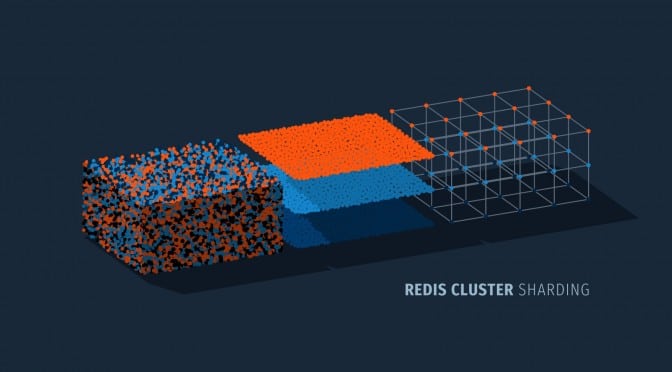RabbitMQ is an open-source message broker that simplifies inter-service communication by ensuring messages are effectively queued, delivered, and processed across diverse applications. It employs the Advanced Message Queuing Protocol (AMQP) to provide reliable, scalable message passing, crucial for modern applications dealing with large-scale, complex data flows.
RabbitMQ allows web applications to create and place messages in a message queue for further processing. It acts as a producer that delivers these messages to the message broker, storing and waiting for consumers to retrieve and process them. In this article, we will explore what RabbitMQ is, its mechanisms to facilitate message queueing, its role within software architectures, and the tangible benefits it delivers in real-world scenarios.
Key Takeaways
- RabbitMQ is a versatile message broker that supports AMQP, MQTT, and other protocols. This makes it suitable for various industries and applications, including IoT, finance, and e-commerce.
- It provides durable queues for message persistence and various exchange types for routing logic and supports clustering for high availability and fault tolerance across multiple instances.
- RabbitMQ’s flexibility in message delivery and its role in decoupling services make it an indispensable tool in microservices architecture and for managing tasks such as emails, push notifications, and Remote Procedure Calls (RPC).
Understanding RabbitMQ
Thanks to its consistent long-term performance, RabbitMQ has established itself as a reliable workhorse within the finance, telecommunications, and e-commerce sectors. This is largely attributed to the implementation of the Advanced Message Queuing Protocol (AMQP), which delivers strong scalability in message handling, optimizes bandwidth use, and guarantees faithful message delivery.
RabbitMQ’s compatibility with various programming languages makes it versatile for developers, who can select the language that perfectly aligns with their project requirements. RabbitMQ ensures accurate message delivery and handles situations where the recipient software isn’t ready for immediate message processing.
Far from being just another message broker, RabbitMQ acts as a nexus for different messaging protocols to interoperate smoothly. Its extensibility through plugins allows it to meet various messaging demands while ensuring support for various protocols, including STOMP and MQTT, beyond just AMQP.
RabbitMQ as a Message Broker
RabbitMQ is an essential intermediary in contemporary software architectures, ensuring smooth interaction and operation across different services. It plays a critical role by assigning tasks, which trims down the delivery times for web application servers and enhances overall productivity.
RabbitMQ excels in parceling out bite-sized work segments to multiple consumers. This capability aids in evenly distributing tasks and achieving a balanced workload among participants. Additionally, the low coupling between sender and receiver applications allows for greater flexibility and scalability in the system.
Advanced Message Queuing Protocol
RabbitMQ is equipped to handle various use cases, including enterprise messaging, cloud computing environments, and microservices architecture, by facilitating improved message delivery among diverse services thanks to its support for the AMQP protocol. Its compatibility with MQTT, known for being a compact messaging protocol, Demonstrates its adaptability for use in Internet of Things (IoT) contexts.
Its commitment to open standard protocols such as AMQP 1.0 and MQTT 5 ensures that RabbitMQ can interoperate seamlessly within our growingly networked world, establishing itself as a multipurpose instrument in today’s vast technological landscape.
Anatomy of a RabbitMQ Queue
Under the surface of RabbitMQ, queues act as a fundamental component where messages are held and handled. These queues possess characteristics that include:
- Queue name
- Durable attribute
- Exclusive status
- Auto-delete property
- Additional options known as ‘x-arguments’
The queue’s ‘name’ is a distinctive identifier in the RabbitMQ environment, pivotal for directing messages appropriately.
Queues designated as durable maintain their configuration and stored messages even after the broker restarts. Exclusive queues are limited to usage by the connection that created them. Conversely, auto-delete queues vanish once all associated consumers have disconnected. Furthermore, ‘x-arguments’ provide granular control over queue functionality—permitting tailored settings like message TTL— thus accommodating various specialized requirements.
Queue Durability and Persistence
The importance of message durability in RabbitMQ lies in its ability to maintain messages even after server restarts. Durable queues achieve this by storing their metadata on disk and restoring persistent messages when the system returns online, a capability not shared with transient queues, which lose their contents if the node restarts. Each message needs to be flagged as durable to withstand server reboots.
While ensuring that messages are durable brings several advantages, it’s important to note that it doesn’t significantly degrade performance regarding throughput or latency. Nevertheless, RabbitMQ prioritizes system stability and may halt incoming messages from producers should available disk space drop below a critical threshold.
Exclusive Access and Auto-Deletion
RabbitMQ features exclusive queues uniquely bound to the connection that established them. These special queues are set to be removed automatically when the connection that created them is either closed or discontinued. Conversely, auto-delete queues in RabbitMQ can be deleted once no remaining subscribers consume them.
These queues are essential for temporary operations or processes where queue permanence isn’t required, enabling better resource management.
The Journey of a Message: From Publisher to Consumer
Within RabbitMQ, the journey of RabbitMQ messages begins when they are produced and dispatched to a broker server. The process unfolds as follows:
- Message creation is undertaken by producers, who then send these messages off.
- Each message gets tagged for its journey ahead.
- Producers pass on the message to an exchange within RabbitMQ.
- This exchange is pivotal in directing each message toward the appropriate queue using a routing key or pattern.
After successfully navigating their way into the queue, RabbitMQ messages stand at attention, poised for dispatch to consumer applications via a push model that promotes swift delivery. In contrast, ensuring consumers pass on newly available messages with minimal delay.
Publishing Messages to Exchanges
In RabbitMQ, dispatching messages to exchanges is essential in their delivery process. Messages are not placed directly into queues. Instead, they arrive at an exchange that routes them according to specific bindings. Each message comes with a routing key and headers, which inform the exchange how to direct the message towards its destined queue.
RabbitMQ provides several kinds of exchanges for effective data exchange.
- Direct exchanges: these require that the routing key within a message precisely coincide with a binding routing key for the message to be sent to its intended queue.
- Topic exchanges: these use pattern matching between a message’s routing key and patterns set up in queue bindings to determine appropriate queues for route messages.
- Fanout exchanges: all bound queues receive incoming messages without discrimination under this type.
The variety among these types of exchanges crucially influences how messages traverse through systems—dictating both their path and final delivery points across diverse queuing structures.
Understanding the Routing Key and Queues
Routing keys are crucial in RabbitMQ to ensure that messages are delivered accurately. They allow for specific routing to designated queues, confirming that every message finds its proper recipient. In this system, RabbitMQ directs messages into queues—think of them as postboxes where they linger until they’re picked up by consumers.
Regarding a topic exchange within RabbitMQ, it channels messages towards various queues guided by a routing key composed of words separated by periods. This method provides an adaptable means to effectively steer messages into their relevant queues.
Consuming Messages
Once a message is successfully dispatched to its destination queue, the next phase involves consumption. In RabbitMQ, consumers are critical in seizing and undertaking tasks conveyed through these messages. By linking themselves with a specific queue, consumers ensure every message is processed singularly to avoid any redundancy of work.
The process doesn’t conclude upon consumption, though. To verify that messages reach their intended recipients without fail, RabbitMQ has implemented diverse strategies for acknowledging message receipt by consumers. It grants the ability for consumers to connect with an ongoing stream at varying junctures, which includes options such as:
- initiating from the first message
- initiating from the most recent one
- beginning at an identified offset within the stream
- picking up from a designated timestamp
- choosing to start at predetermined intervals
Such adaptability is one key reason among many for why RabbitMQ garners preference across different applications—IoT is just one prominent example where it’s extensively applied.
RabbitMQ’s Flexibility in Message Delivery
The messaging platform RabbitMQ boasts a robust capability for distributing messages. A notable feature includes the ability to assign priorities to individual messages within classic queues by employing the ‘x-max-priority’ argument, which has priority levels from 1 up to 255.
In terms of how these priority levels function:
- Messages with higher priority levels take up more computing resources because they create separate sub-queues based on their level of importance.
- If a message is not assigned any specific priority, it’s deemed as having the lowest one.
- Should a message’s designated priority surpass that set as the maximum for the queue, it will be treated at the highest possible existing level instead.
RabbitMQ allows users to specify time-to-live (TTL) settings for each message. This TTL determines how long an unclaimed or undelivered message should remain in its respective queue before being purged. Setting this expiration timeframe can be achieved when declaring a queue or applying policies affecting all contained messages simultaneously.
RabbitMQ incorporates fanout exchanges into its arsenal of tools. These exchanges can relay incoming messages across every linked queue without regard for the routing keys involved. Such versatility assures that information dissemination aligns seamlessly with application requirements and user preferences when using fanout exchange routes.
Ensuring Reliable Delivery
RabbitMQ excels in providing a reliable delivery system for messages, employing multiple tactics to prevent message loss during transit. These methods include:
- Consumer acknowledgments sent back to the broker upon receiving messages.
- Broker’s confirmation of receipt to message publishers.
- Publisher confirmations that ensure messages have been accepted by the broker.
- Acknowledgment procedures for processed messages.
These strategies are orchestrated within RabbitMQ’s messaging environment and consider diverse message attributes through careful processing steps, bolstering its capacity for dependable message delivery.
RabbitMQ enhances reliability with its clustering capabilities, which allow it to replicate messages across nodes in a cluster. This replication is designed to significantly heighten fault tolerance levels. Features like persistent storage of messages contribute to security against data loss even when faced with unexpected system failures, which is particularly essential within IoT applications where durability and resilience are paramount components of delivering communication reliably via such networks.
Acknowledgment of Message Delivery
Acknowledgment from consumers in RabbitMQ is an essential feature that verifies the receipt and handling of messages for their dependable delivery, ensuring they remain unmarked for deletion until they are completely processed. With RabbitMQ, there is an option between automatic and manual acknowledgment modes to cater to different needs regarding message reliability.
For those opting for manual acknowledgment when using RabbitMQ, this can be done through the basic.ack method. Alternatively, if one prioritizes higher throughput over safety concerns, the automatic mode provides a ‘fire-and-forget’ approach.
Publisher confirms within RabbitMQ act as a notification system that informs publishers once their messages have been successfully dealt with by the broker. This includes acknowledgments confirming both publishing actions and storage on disk.
In scenarios where clusters handle RabbitMQ channels, they must preserve consistency by ensuring that any given message receives acknowledgment on the same channel where it was first delivered. This requirement helps prevent potential inconsistencies or errors during processing.
Clustering for Fault Tolerance
RabbitMQ ensures high availability and fault tolerance by implementing clustering. This technique connects multiple RabbitMQ instances, enabling the replication of different queue types for redundancy. Specifically, Quorum Queues within a cluster feature a leader and followers distributed across various nodes to maintain service reliability.
Quorum queues and streams are pivotal in achieving high availability within these clusters. They do this through one node containing the leader replica, while additional nodes contain follower replicas ready to step up if the primary leader encounters failure. If there is ever a broker breakdown, RabbitMQ maintains uninterrupted service by promoting a follower replica to become the new leader.
Decoupling Services
RabbitMQ excels as a facilitator of asynchronous communication among applications, which is highly advantageous for microservices architectures. As a message broker, RabbitMQ separates processes within applications across various languages, platforms, and operating systems, thereby enhancing scalability.
Through the deployment of message queues, RabbitMQ guarantees consistent end-to-end delivery of messages regardless of whether the receiving service is currently available. This supports asynchronous communication and positions message brokers like RabbitMQ as central to advancing.
- Scalability
- Dependability
- Continual availability
- Separation between application processes.
In practical scenarios such as sending emails or push notifications, RabbitMQ plays an integral role in isolating the task of dispatching these alerts from the originating applications that trigger them.
Enhancing Scalability Through Asynchronous Communication
Messaging systems, including message queues like those offered by RabbitMQ, enable system components to scale effortlessly without altering code or configurations. Using a message queue approach, RabbitMQ adeptly handles surges in traffic through data queuing. This guarantees that messages will be preserved and processed eventually, even if immediate processing isn’t possible.
With task queues provided by RabbitMQ’s messaging systems, delegating resource-intensive tasks away from the main application flow is feasible. This delegation maintains an application’s responsiveness while improving its ability to scale. By deploying additional server processes on the Remote Procedure Call (RPC) server-side within RabbitMQ’s framework, coping with greater workloads becomes more streamlined and effective.
Remote Procedure Calls (RPC) with RabbitMQ
The RabbitMQ server supports the implementation of Remote Procedure Call (RPC) patterns by enabling synchronous communication through a message exchange that uses a client library. This approach allows messages to request and receive responses from the RabbitMQ server, which listens on an allocated queue prepared to process incoming requests and return response messages.
To trigger RPC via RabbitMQ, clients follow these steps:
- They establish an exclusive callback queue specific to them, intended only for gathering replies.
- In their outgoing RPC message, they set the ‘reply_to’ property, indicating their callback queue where they expect to get responses.
- In their RPC message, they define a unique ‘correlation_id’ to help pair received replies with the original sent request.
Clients monitor their callback queues once an RPC request is sent and employ the ‘correlation_id’ system to ensure precise alignment between each received response and its corresponding initial request.
Scalegrid’s Integration with RabbitMQ
Scalegrid is soon expanding its managed DBaaS offerings to include support for RabbitMQ. This update will include several features specific to RabbitMQ on AWS, such as accelerated incident response time for increased resilience, enhanced monitoring at the service level, and improved network-level tracing options. Users who adopt Scalegrid’s managed DBaaS solutions can take advantage of these developments within their applications—this ensures that managing and operating RabbitMQ in production settings is streamlined and effective.
Stepping back, it’s clear how RabbitMQ has become an essential tool in modern software architecture. Its ability to streamline communication and data exchange between distributed applications, handle streaming data, and support RPC patterns makes it versatile and invaluable. RabbitMQ’s adherence to open standard protocols, support for various messaging protocols, and flexible message delivery mechanisms add to its appeal.
Looking forward, Scalegrid’s upcoming support for RabbitMQ will offer users even more powerful features and benefits, enhancing the efficiency and reliability of their applications. Whether for a small start-up or a large enterprise, RabbitMQ offers a scalable, robust, and reliable solution for managing communication and data exchange between services.
Frequently Asked Questions
What is RabbitMQ’s role in modern software architecture?
Serving as an intermediary for diverse services, RabbitMQ enhances the flow of communication and bolsters the efficiency of operations within contemporary software architecture.
Assigning tasks to different processors is crucial in diminishing server response times for web applications, thus becoming vital in current software frameworks.
Can RabbitMQ handle streaming data?
Indeed, RabbitMQ can process streaming data in real time and thus can be apt for applications involving constant, voluminous data streams, such as video platforms.
How does RabbitMQ ensure reliable message delivery?
RabbitMQ guarantees the dependable delivery of messages by employing acknowledgments from consumers to the broker upon receipt of messages and confirmations from brokers to publishers. It enhances fault tolerance through the utilization of cluster nodes.
What is a Remote Procedure Call (RPC) in RabbitMQ?
In the context of RabbitMQ, a Remote Procedure Call (RPC) is a process involving a synchronous exchange where a client sends a request for certain operations to be performed by the server. Upon processing the request, the server replies with a message containing the results.
Such an interaction allows for effective communication and synchronization among various system components.
How does RabbitMQ support IoT applications?
RabbitMQ facilitates Internet of Things (IoT) applications by offering an architecture capable of scaling to accommodate the growth in device count and data volume, making it particularly advantageous for IoT scenarios.








